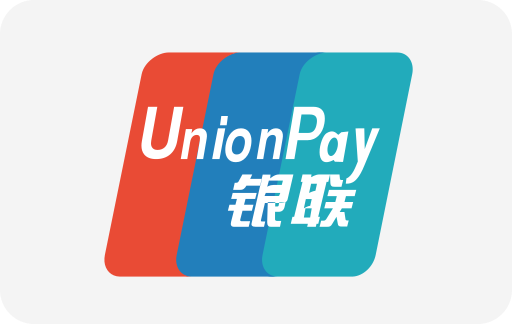
In the digital age, having an online presence is not a luxury—it’s a necessity. Businesses of all sizes, from small home-based ventures to large corporations, are leveraging the internet to reach a broader audience, increase sales, and streamline operations. If you’re a business owner looking to take your enterprise online, WordPress is one of the most powerful and flexible platforms to help you achieve that goal.
This article will walk you through everything you need to know about bringing your business online with WordPress. From planning and domain registration to design, security, SEO, and launching your site—we’ve got you covered.
Whether you're based in New York, Nairobi, or the Philippines, this guide is relevant to anyone ready to harness the power of the internet.
1. Why Bring Your Business Online?
Before diving into the technical steps, it’s important to understand why bringing your business online is vital in today’s marketplace.
Benefits:
- Wider Reach: Online platforms allow you to market your products and services to customers anywhere in the world.
- 24/7 Availability: Your website is open for business even when you’re not.
- Brand Credibility: A professional website boosts trust and legitimacy.
- Customer Convenience: Consumers prefer businesses they can research and shop from online.
- Cost-Effective Marketing: Digital marketing strategies like SEO and social media are often cheaper and more targeted than traditional marketing.
2. Why Choose WordPress?
WordPress powers over 40% of all websites on the internet, making it the most popular content management system (CMS) in the world. It is free, open-source, and supported by a massive community.
Advantages:
- Ease of Use: Even without technical knowledge, you can build and manage a website.
- Flexibility: WordPress supports eCommerce, blogs, forums, and more.
- Themes and Plugins: Thousands of themes and plugins help you customize your site easily.
- SEO-Friendly: Built-in features and third-party plugins help boost your site’s visibility.
- Scalability: Start small and grow your site as your business expands.
3. Planning Your Online Business
Success begins with planning. Here’s how to lay the groundwork before setting up your WordPress site.
Identify Your Goals
What do you want your website to do? Examples:
- Showcase your products
- Sell items directly (eCommerce)
- Capture leads or inquiries
- Provide customer support
- Build brand awareness
Choose a Business Name and Domain
Your domain name (e.g., www.yourbusiness.com) is your identity online. Choose one that is:
- Easy to remember
- Relevant to your brand
- Short and simple
- Ideally includes keywords (if applicable)
You can purchase a domain from registrars like GoDaddy, Namecheap, or Bluehost.
Research Your Competition
Look at similar businesses online. Note their strengths, weaknesses, and the features of their websites. This research will guide your content and design.
4. Setting Up Hosting and WordPress
Choose a Hosting Provider
Hosting is where your website lives online. Popular WordPress-friendly hosts include:
- Bluehost (official WordPress recommendation)
- SiteGround
- Hostinger
- DreamHost
These providers offer one-click WordPress installation, SSL certificates, and good customer support.
Install WordPress
Most hosting providers offer simple one-click installation. After the setup:
- Log into your WordPress dashboard (usually via www.yourdomain.com/wp-admin)
- Familiarize yourself with the interface
- Start customizing!
5. Choosing the Right WordPress Theme
Your theme defines your website’s appearance. Choose a responsive, SEO-friendly, and fast-loading theme that aligns with your brand.
Free vs Premium Themes
- Free Themes: Available in the WordPress repository; good for beginners.
- Premium Themes: Offer more customization, updates, and support. Sites like ThemeForest or Elegant Themes are great sources.
Recommended Business Themes:
- Astra
- OceanWP
- Divi
- Neve
- GeneratePress
Make sure to preview the theme and read user reviews before installation.
6. Essential Plugins for Business Websites
Plugins add functionality to your WordPress site. Here are must-have plugins for a business website:
Website Performance & Security
- Wordfence Security – Firewall and malware scanning
- UpdraftPlus – Backup your site regularly
- WP Rocket or W3 Total Cache – Improve loading speeds
SEO & Marketing
- Yoast SEO – Optimize your content for search engines
- Google Site Kit – Connect with Google Analytics, Search Console
- Mailchimp for WordPress – Email marketing integration
E-commerce
- WooCommerce – Turn your WordPress site into an online store
- Stripe/WooPayments – Accept online payments
Contact & Communication
- WPForms or Contact Form 7 – Let customers reach you easily
- LiveChat – Real-time customer support
7. Creating Your Content
Content is king. Your website’s content should reflect your brand, answer customer questions, and guide them to take action.
Key Pages to Include:
- Home Page: First impression. Clear message and call-to-action (CTA).
- About Us: Build trust with your story and mission.
- Products/Services: Highlight what you offer.
- Contact Page: Phone number, email, form, location map.
- Blog: Share updates, how-tos, and industry news (helps SEO).
Use high-quality images, concise headlines, and strong CTAs like “Buy Now” or “Get a Free Quote.”
8. Building an Online Store with WordPress
If you want to sell products or services online, WooCommerce is the go-to solution for WordPress.
Features of WooCommerce:
- Inventory management
- Digital & physical products
- Secure payments
- Shipping & tax options
- Sales analytics
WooCommerce has extensions for coupons, memberships, and more. It’s perfect for businesses in the Philippines and beyond looking to tap into the eCommerce market.
9. Making Your Site SEO-Friendly
Search Engine Optimization (SEO) ensures that customers can find you on Google.
Basic SEO Tips:
- Use Yoast SEO or Rank Math to optimize each page
- Choose relevant keywords
- Write meaningful meta descriptions
- Add alt text to all images
- Structure content with headings (H1, H2, etc.)
- Use internal linking to guide users and search engines
Create and submit a sitemap using Google Site Kit or Yoast to help Google index your site.
10. Mobile Optimization and Speed
More than half of all internet traffic comes from mobile devices.
Tips for a Mobile-Friendly Site:
- Choose a responsive theme
- Avoid heavy elements (like large videos)
- Use compressed images (via plugins like Smush)
- Test on tools like Google’s Mobile-Friendly Test
11. Legal Essentials
Depending on your business, there are some legal aspects to consider.
- Privacy Policy – Especially important if you collect user data
- Terms & Conditions
- Return and Refund Policy (for eCommerce)
- Cookie Consent Plugin (like GDPR Cookie Consent)
12. Launching Your Website
Once everything is in place:
- Preview each page
- Test all links and forms
- Proofread content
- Check on multiple devices and browsers
- Set your site to “Public” under Settings > Reading
Then, announce your launch on social media, email, and to your network!
13. Ongoing Maintenance
Launching is just the beginning. A successful website needs care and regular updates.
Tasks to Perform Regularly:
- Update WordPress, themes, and plugins
- Backup your site weekly
- Monitor for security threats
- Post new content (e.g., blogs)
- Track performance with Google Analytics
14. Marketing Your Website
Once live, drive traffic to your site through these channels:
Social Media
- Share your blogs and promotions
- Engage with your audience
- Run ads on Facebook/Instagram
Email Marketing
- Collect leads via contact forms
- Send newsletters, offers, and updates
Paid Advertising
- Google Ads
- Facebook Ads
- Retargeting campaigns
Local SEO
If your business serves a local market, create a Google Business Profile. Encourage satisfied customers to leave reviews.
15. Growing Your Online Business
As your business grows, WordPress grows with you.
Growth Ideas:
- Add a booking system
- Offer digital downloads
- Add multi-language support (e.g., WPML)
- Launch a membership or subscription model
- Open an affiliate program
Starting new Bussiness with Wordpress
Taking your business online is one of the smartest moves you can make in today's marketplace—and WordPress makes that transition smooth, flexible, and cost-effective. Whether you’re in the Philippines or anywhere else in the world, your customers are already online. It’s time your business meets them there.
From selecting a domain name and theme to managing content and marketing, every step you take with WordPress builds your digital presence. The best part? You don’t need to be a tech expert.
Start small. Stay consistent. And watch your online business grow.
We are the best Philippines marketing agency on the net.
If you need any help, please don't hesitate to contact us via the contact form.















PH Ranking offers the highest quality website traffic services in Philippines. We provide a variety of traffic services for our clients, including website traffic, desktop traffic, mobile traffic, Google traffic, search traffic, eCommerce traffic, YouTube traffic, and TikTok traffic. Our website boasts a 100% customer satisfaction rate, so you can confidently purchase large amounts of SEO traffic online. For just 720 PHP per month, you can immediately increase website traffic, improve SEO performance, and boost sales!
Having trouble choosing a traffic package? Contact us, and our staff will assist you.
Free consultation